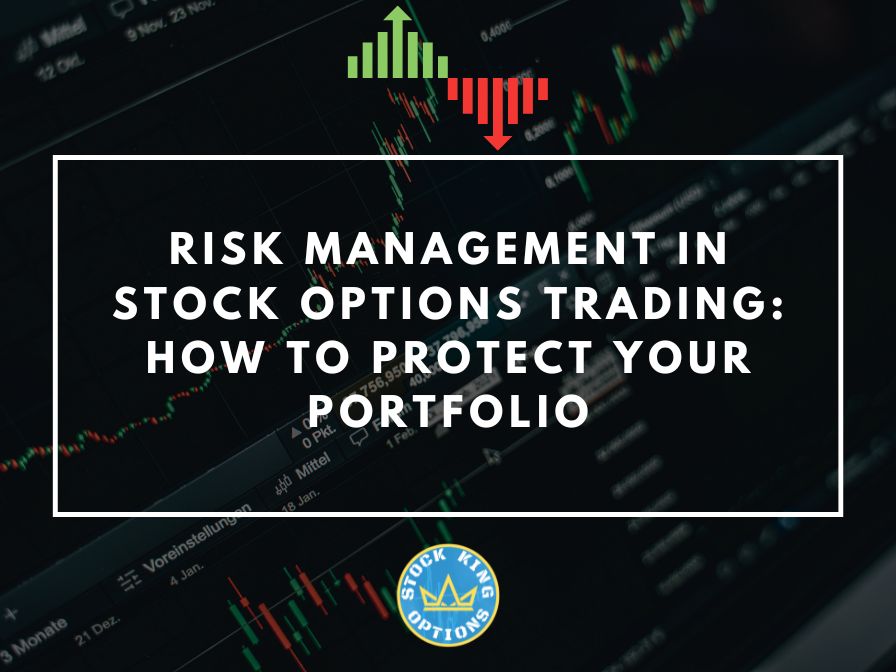
Stock options trading involves a great risk, and yet many traders are willing to start trading stock options. After all, it can be incredibly lucrative when done correctly. But how do you protect yourself from making the wrong option plays? Risk management in stock options trading helps us get out of losing trading and explain how to protect your portfolio and maximize your profits with stock option trading. From monitoring market trends to understanding the difference between buying and selling options, this article provides strategies for reducing risk and increasing your profits in the stock options market.
Understanding the Risks in Stock Options Trading
When it comes to stock options trading, there is always risk potential but you can also maximize your profits. This is why proper risk management is essential to protect your portfolio.
See the following risks with stock options trading:
Stock price falling: If the stock price falls after you have purchased a call option, you may lose money.
Stock price rising: If the stock price rises after you have purchased a put option, you may lose money. If you have sold a call option, you may be required to sell the shares at a lower price than the current market value.
Time decay: Time decay is the erosion of an option’s value as it approaches its expiration date. This is particularly relevant for options that are “out of the money” – i.e. those whose strike prices are not close to the current stock price. The closer an option gets to expiry, the greater its time decay.
Volatility is the fluctuations in a stock’s price over time. A period of high volatility can be detrimental to an option’s position as it can increase the chance of losses being incurred. Conversely, low volatility means there is less chance of making significant profits from an options trade.
Strategies for Managing Risk in Options Trading
Options trading is a high-risk trading which even experienced investors can lose money if they don’t manage their risks properly as this type of trading is not for beginners. Learn how to trade the stock options for beginners. These are strategies that you can use to help manage risk in your options trading:
Use stop-loss orders: A stop-loss order is an order to sell an option at a specific price. If the stock price falls below the strike price, the stop-loss order will be triggered and the option will be sold. This can help limit your losses if the market turns against you.
Use limit orders: A limit order is an order to buy or sell an option at a specific price. If the option’s price reaches that price, the limit order will be executed. This can help lock in profits if the market moves in your favor.
Use hedging: Hedging is a strategy where you take offsetting positions in different options or securities to minimize your risk. For example, if you own a call option on a stock, you could buy a put option on that same stock as a hedge.
Diversify your portfolio is always important in investing, but it’s especially important when trading options. By spreading your bets across different options and securities, you can reduce your overall risk.
Techniques for Protecting Your Portfolio in Options Trading
There are some techniques that options traders can use to protect their portfolios. One popular approach is to use stop-loss orders. A stop-loss order is an order to sell an asset when it reaches a certain price. This can help limit losses if the market turns against you.
Another common technique is to hedge your position with another investment. For example, if you are long on a stock, you could buy a put option to hedge your position. This way, if the stock falls in value, the put option will increase in value and offset some of your losses.
Many specific options strategies can be used to protect your portfolio. One popular strategy is known as the collar trade. This involves buying a put option and selling a call option with the same expiration date. This can help protect against large losses in either direction.
Whatever approach you take, it is important to have some risk management in place when trading options. By using stop-losses, hedges, and/or specific options strategies, you can help protect your portfolio from substantial losses.
Best Practices for Risk Management in Options Trading
There are many best practices for risk management in options trading. It is important to have a clear understanding of the underlying stock and the options market. It is a huge benefit in having an understanding of one’s own risk tolerance and investment goals.
Once these factors are understood, it is important to create a sound trading plan that includes specific entry and exit points, as well as stop-losses. It is also advisable to limit position size and never over-leverage oneself. Perhaps most importantly, it is crucial to always maintain disciplined risk management throughout the life of a trade.




